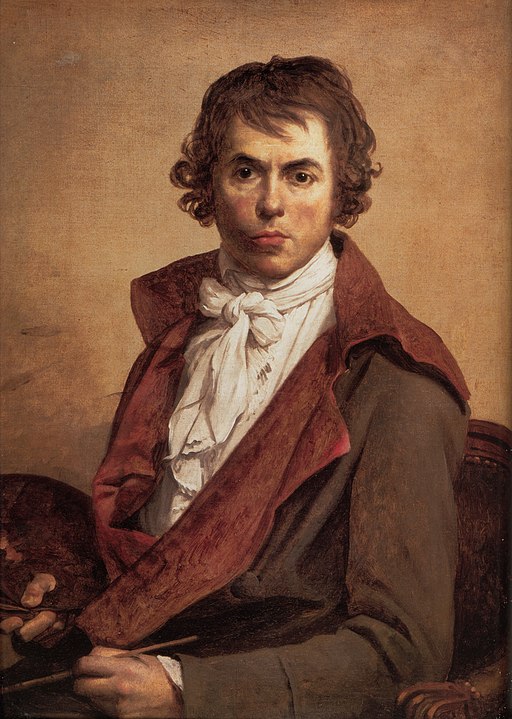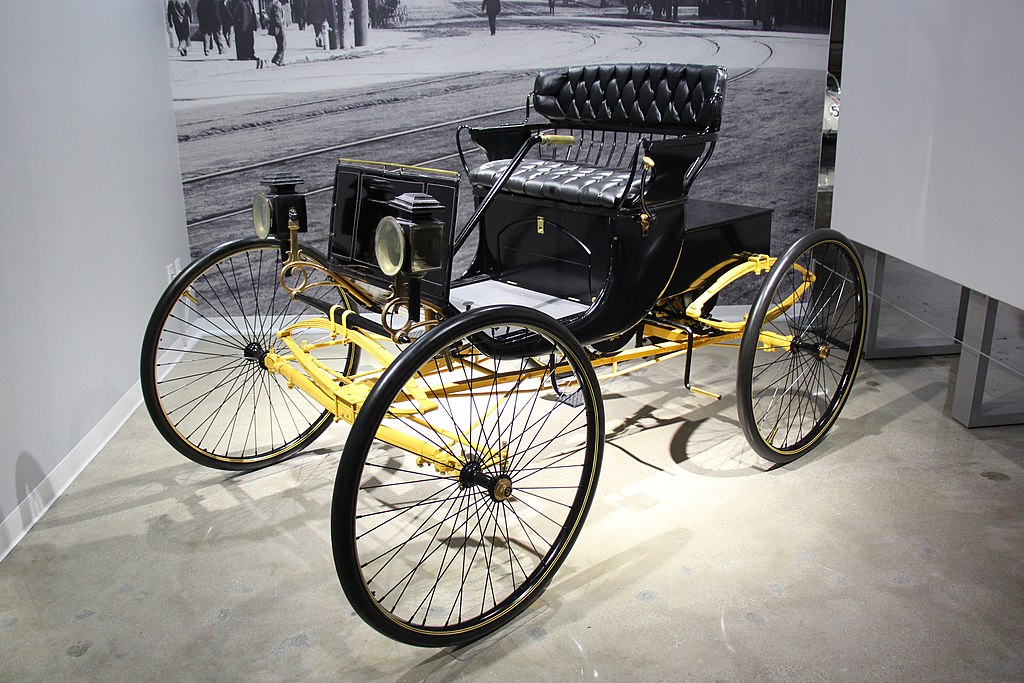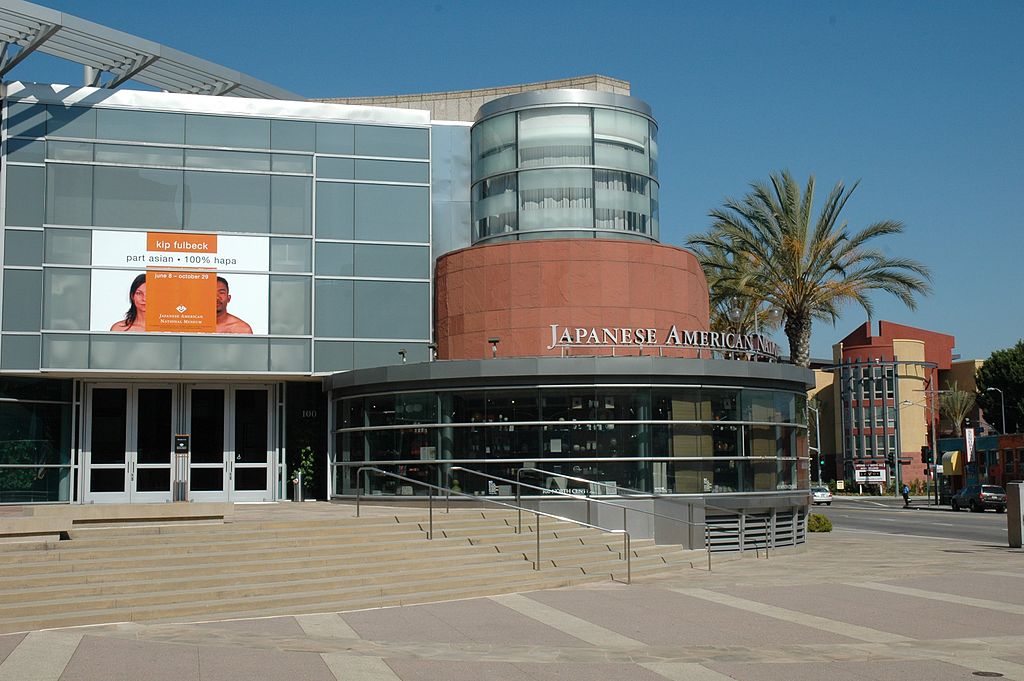
Jacques-Louis David (1748 – 1825) was a French painter in the Neoclassical style, considered to be the preeminent painter of the era.
In the 1780s, his history painting marked a change in taste away from Rococo frivolity toward a classical austerity and feeling, harmonizing with the moral climate of the final years of the Royal Régime.
David became an active supporter of the French Revolution and friend of Maximilien Robespierre and was effectively a dictator of the arts under the French Republic.
Imprisoned after Robespierre’s fall from power, he aligned himself with yet another political regime upon his release, that of Napoleon.
At this time, he developed his Empire style. After Napoleon’s fall from Imperial power and the Bourbon revival, David exiled himself to Brussels, then in the United Kingdom of the Netherlands, where he remained until his death.
David had a large number of pupils, making him the most substantial influence in French art of the early 19th century, primarily academic Salon painting.
Virtual Tour of Jacques-Louis David
- The Death of Socrates
- The Emperor Napoleon in His Study at the Tuileries
- The Death of Marat
- Oath of the Horatii
- The Coronation of Napoleon
- Leonidas at Thermopylae
Highlights Tour of Jacques-Louis David
The Death of Socrates
The Death of Socrates by Jacques-Louis David depicts Socrates as the stoic older man in a white robe sitting upright on a bed; his right hand extended over a cup, the left hand is gesturing in the air.
He is surrounded by his students and loyal followers, showing emotional distress. The young man handing him the cup looks the other way, with his face in his hand.
Another young man clutches the thigh of the older man begging Socrates not to take the poison. An elderly man sits at the end of the bed, is Plato, his most famous student, and he is shown slumped over and looking in his lap.
This famous painting depicts the execution of Socrates, as told by Plato. Socrates has been convicted of corrupting the youth of Athens and introducing strange gods and has been sentenced to die by drinking poison hemlock.
Socrates uses his death as the last lesson for his pupils and not fleeing when the opportunity arises and faces it calmly. Museum: Metropolitan Museum of Art – MET
The Emperor Napoleon in His Study at the Tuileries
“The Emperor Napoleon in His Study at the Tuileries” by Jacques-Louis David shows Napoleon standing, three-quarters life-size, wearing the uniform of a colonel of the Imperial Guard Foot Grenadiers with his military decorations.
Napoleon is looking at the viewer and poses with his right hand is in his jacket. His face is reminiscent of Churchill’s early portraits of determination. On the desk are a pen, several books, dossiers, and rolled-up papers.
More rolled documents and a map are on the green carpet to the left of the desk.
Napoleon’s unbuttoned cuffs, wrinkled stockings, disheveled hair, the flickering candles that are nearly spent, and the time on the clock (4.13 am) are all meant to imply he has been up all night, writing laws such as the Code Napoléon.
The word “Code” is prominent on the rolled papers on the desk. Museum: National Gallery of Art, Washinton DC
The Death of Marat
“The Death of Marat” by Jacques-Louis David depicts the murdered French revolutionary leader Jean-Paul Marat.
David’s painting shows the radical journalist at the moment of his death in his bath in 1793, after his murder.
Marat (1743 – 1793) was one of the leaders of a key political group during the French Revolution, the radical faction ascendant in French politics during the “Reign of Terror.”
Marat suffered from a skin condition that caused him to spend much of his time in his bathtub, where he would often complete his work.
Charlotte Corday, who murdered him, was from an opposing political fraction and from a minor aristocratic family and a political enemy of Marat who blamed him for the September Massacre.
Painted in the months after Marat’s murder, David, who was a member of the Revolutionary Committee of General Security, created one of the most famous images of the French Revolution.
Marat’s image is idealized as he has no sign of his skin problems; his skin appears clear and flawless.
David, however, included other details from his visit to Marat’s residence the day before the assassination, including the green rug, the papers, and the pen. Museums: Royal Museum of Fine Arts in Brussels, and Louvre Museum
Oath of the Horatii
“Oath of the Horatii” by Jacques-Louis David depicts a scene from a Roman legend about a seventh-century BC dispute between two warring cities, Rome and Alba Longa.
It is one of the best-known history paintings in the Neoclassical style. Its theme stresses the importance of patriotism and self-sacrifice for one’s country and family.
The painting depicts the Roman Horatius family, from which three brothers had been chosen for a ritual duel. The duel was against three brothers of the Curiatii, a family from Alba Longa, to settle the disputes between the two cities. Museum: Louvre, Paris
The Coronation of Napoleon
“The Coronation of Napoleon” by Jacques-Louis David shows all eyes turned towards Napoleon and the crown. He is the central subject of this composition.
Napoleon is standing, dressed in coronation robes similar to those of Roman emperors. The coronation of Napoleon as Emperor that took place on Sunday, December 2, 1804, was a masterful act of propaganda.
This painting, which is a large imposing painting at almost 10 meters (33 ft) wide by 6 meters (20 ft) tall, was part of the propaganda effort. Museum: Louvre, Paris
Leonidas at Thermopylae
Leonidas at Thermopylae by Jacques-Louis David depicts the Spartan King Leonidas before the final Battle of Thermopylae in 480 BCE.
The crowded and theatrical scene is set at the mountain pass, where the Battle of Thermopylae was about to be fought.
Thermopylae was chosen as the ideal location for a defensive action due to its narrow passage through the mountainous geography.
The narrow coastal pass of Thermopylae called “The Hot Gates” helped the Greeks make a stand against the numerically superior Persians, who were invading Greece.
King Leonidas, the Spartan leader, successfully delayed the invasion of Darius I and the Persians to provide the Greeks the time they needed to organize what became a victorious longer-term resistance. Museum: Louvre, Paris
Jacques-Louis David
- Name: Jacques-Louis David
- Birth: 1748 – Paris, Kingdom of France
- Died: 1825 (aged 77) – Brussels, United Netherlands
- Nationality: French
- Notable Works:
- The Death of Socrates
- The Emperor Napoleon in His Study at the Tuileries
- The Death of Marat
- Oath of the Horatii
- The Coronation of Napoleon
- Leonidas at Thermopylae
Jacques Louis David: A collection of paintings
Jacques-Louis David Quotes
~~~
“In the arts, the way in which an idea is rendered, and the manner in which it is expressed is much more important than the idea itself.”
~~~
“To give a body and a perfect form to one’s thought, this – and only this – is to be an artist.”
~~~
“If the work is poor, the public taste will soon do it justice. And the author, reaping neither glory nor fortune, will learn by hard experience how to correct his mistakes.”
~~~
“I hated school. The masters always beating us with sticks and worse. I was always hiding behind the instructor’s chair, drawing for the duration of the class.”
~~~
“I will never, for the future, paint the portrait of a tyrant until his head lies before me on the scaffold.”
~~~
“The artist must be a philosopher.”
~~~
Jacques-Louis David (French, 1748-1825)
A Tour of Artists and their Art
- Duccio (1255 – 1319)
- Sandro Botticelli (1445 – 1510)
- Leonardo da Vinci (1452 – 1519)
- Albrecht Durer (1471 – 1528)
- Michelangelo (1475 – 1564)
- Raphael (1483 – 1520)
- Titian (1488 – 1576)
- Pieter Bruegel the Elder (1525 – 1569)
- Paolo Veronese (1528 – 1588)
- El Greco (1541 – 1614)
- Caravaggio (1571 – 1610)
- Peter Paul Rubens (1577 – 1640)
- Georges de La Tour (1593 – 1652)
- Nicolas Poussin (1594 – 1665)
- Diego Velázquez (1599 – 1660)
- Rembrandt (1606 – 1669)
- Pieter de Hooch (1629 – 1684)
- Johannes Vermeer (1632 – 1675)
- Élisabeth Sophie Chéron (1648 – 1711)
- Canaletto (1697 – 1768)
- Jean-Honoré Fragonard (1732 – 1806)
- Francisco Goya (1746 – 1828)
- Jacques-Louis David (1748 – 1825)
- Caspar David Friedrich (1774 – 1840)
- J.M.W. Turner (1775 – 1851)
- Jean-Auguste-Dominique Ingres (1780 – 1867)
- Eugène Delacroix (1798 – 1863)
- Rosa Bonheur (1822 – 1899)
- John Everett Millais (1829 – 1896)
- Frederic Leighton (1830 – 1896)
- Édouard Manet (1832 – 1883)
- Edgar Degas (1834 – 1917)
- Paul Cézanne (1839 – 1906)
- Claude Monet (1840 – 1926)
- Pierre-Auguste Renoir (1841 – 1919)
- Berthe Morisot (1841 – 1895)
- Henri Rousseau (1844 – 1910)
- Mary Cassatt (1844 – 1926)
- Elizabeth Thompson (1846 – 1933)
- Gustave Caillebotte (1848 – 1894)
- John William Waterhouse (1849 – 1917)
- Vincent van Gogh (1853 – 1890)
- Frederick McCubbin (1855 – 1917)
- John Singer Sargent (1856 – 1925)
- Tom Roberts (1856 – 1931)
- Lovis Corinth (1858 – 1925)
- Georges Seurat (1859 – 1891)
- Gustav Klimt (1862 – 1918)
- Edvard Munch (1863 – 1944)
- Henri de Toulouse-Lautrec (1864 – 1901)
- Rupert Bunny (1864 – 1947)
- Wassily Kandinsky (1866 – 1944)
- Arthur Streeton (1867 – 1943)
- Franz Marc (1880 – 1916)
- Goyō Hashiguchi (1880 – 1921)
- Amedeo Modigliani (1884 – 1920)
- Artists and their Art
Jacques Louis David’s Drawing “The Death of Socrates”
Jacques-Louis David (1748-1825) A collection of paintings
~~~
“In the arts the way in which an idea is rendered,
and the manner in which it is expressed,
is much more important than the idea itself.”
– Jacques-Louis David
~~~
Photo Credit: 1) Jacques-Louis David [Public domain]
Top Posts & Pages








 Sponsor your Favorite Page
Sponsor your Favorite Page SEARCH Search for: Search Follow UsJoin – The JOM Membership Program
Become a Patron!
Sponsor a Masterpiece with YOUR NAME CHOICE for $5
Share this:
- Tweet
